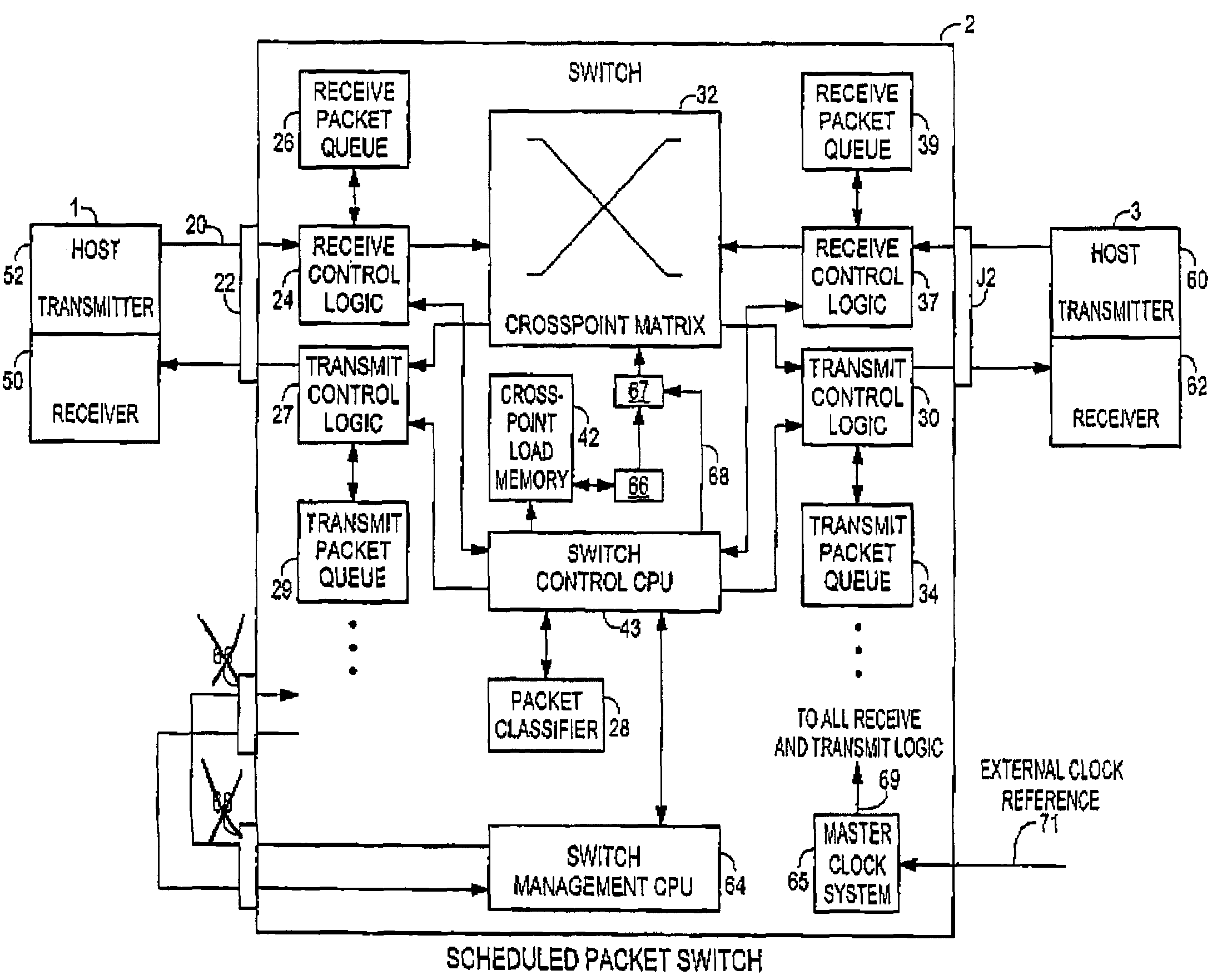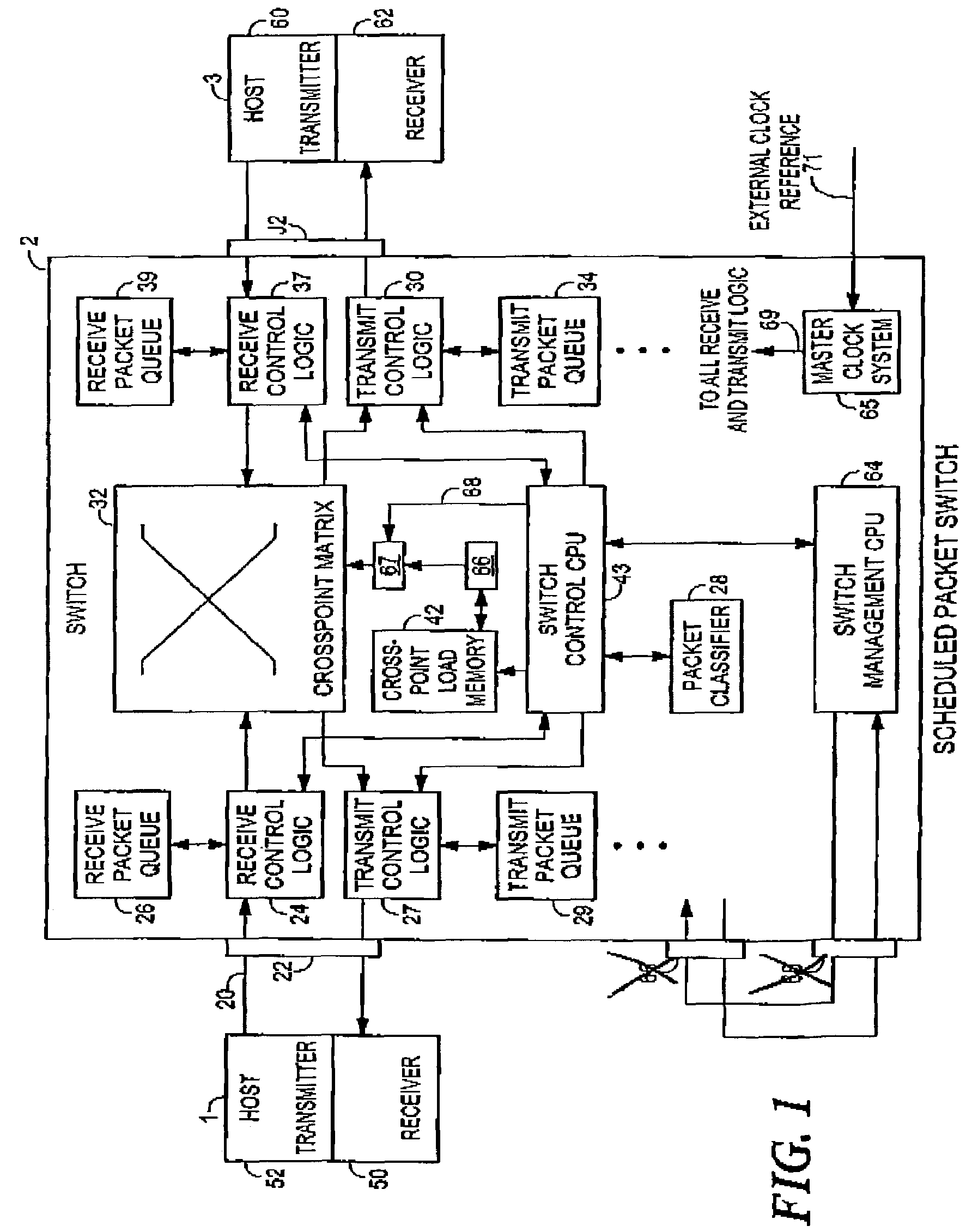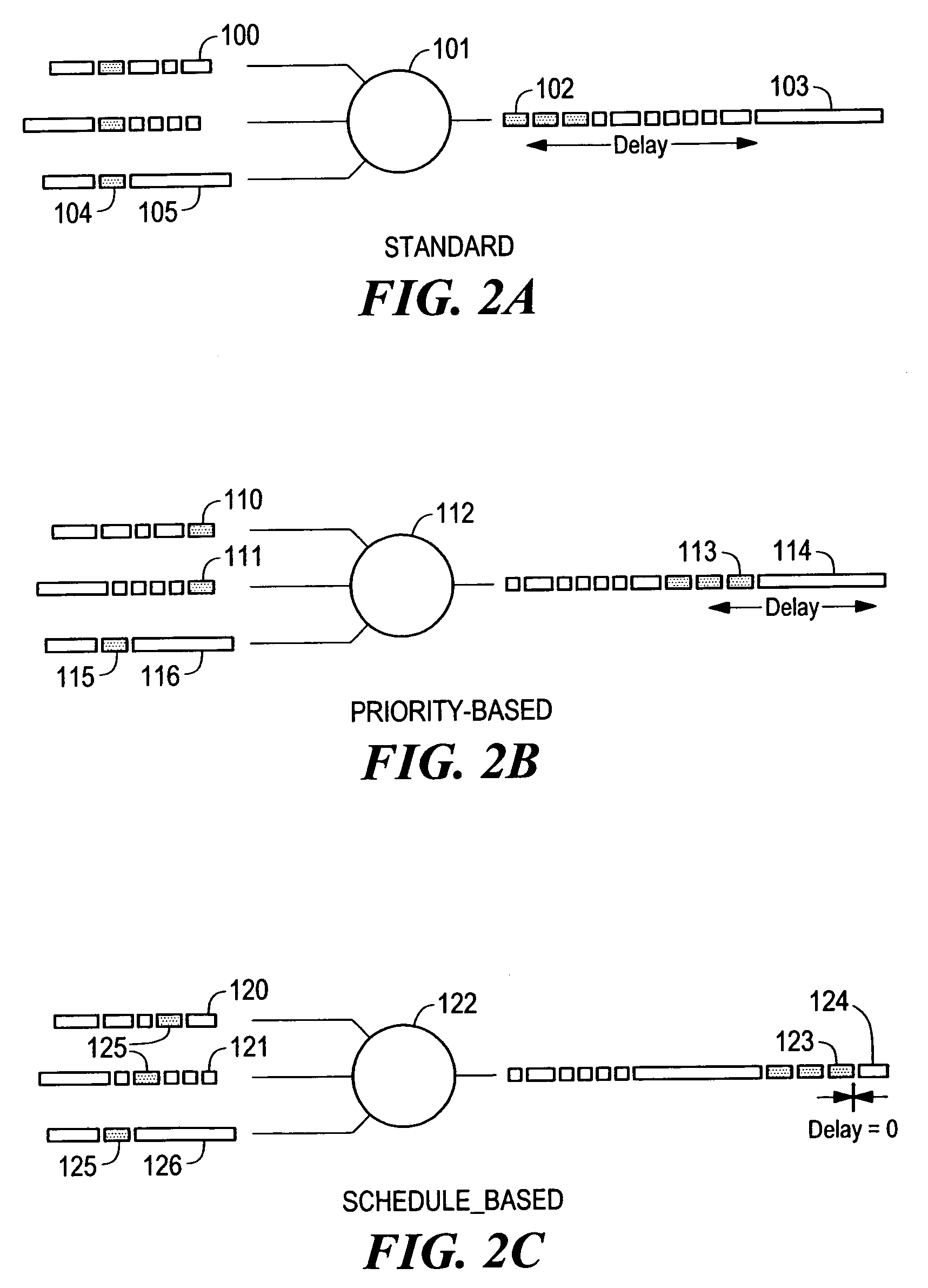Network switch with packet scheduling
a network switch and packet scheduling technology, applied in data switching networks, time-division multiplexing selection, digital transmission, etc., can solve problems such as packet switching that cannot eliminate packet switching cannot guarantee data delivery within limits, and packet switching cannot eliminate packet switching problems such as packet collisions and variable packet delays, so as to ensure packet delivery and reduce transmission problems , the effect of reducing the performance of other packet traffi
- Summary
- Abstract
- Description
- Claims
- Application Information
AI Technical Summary
Benefits of technology
Problems solved by technology
Method used
Image
Examples
Embodiment Construction
[0046]The disclosures of provisional application Ser. No. 60 / 171,956, entitled “NETWORK SWITCH WITH PACKET SCHEDULING”, and filed Dec. 23, 1999, to which this application claims priority under 35 USC §119(e), are hereby incorporated by reference herein.
[0047]As illustrated in FIG. 1, and consistent with an illustrative embodiment of the invention, a high level block diagram of the invention shows three components: a switch 2, a first host terminal 1, and a second host terminal 3. Each of the host terminals 1 and 3 are operable to transmit and / or receive packets.
[0048]A packet which does not require guarantees in terms of delivery and / or delay is passed through the switch 2 as follows: First, the host terminal 1 transmits the packet over a communication link 20 to the switch. In the case where the host terminal 1 is interconnected to the switch 2 via an Ethernet interface, the communication link 20 may be a four pair cable, made up of UTP (Unshielded Twisted Pair) wire. However, the ...
PUM
 Login to View More
Login to View More Abstract
Description
Claims
Application Information
 Login to View More
Login to View More - R&D
- Intellectual Property
- Life Sciences
- Materials
- Tech Scout
- Unparalleled Data Quality
- Higher Quality Content
- 60% Fewer Hallucinations
Browse by: Latest US Patents, China's latest patents, Technical Efficacy Thesaurus, Application Domain, Technology Topic, Popular Technical Reports.
© 2025 PatSnap. All rights reserved.Legal|Privacy policy|Modern Slavery Act Transparency Statement|Sitemap|About US| Contact US: help@patsnap.com



